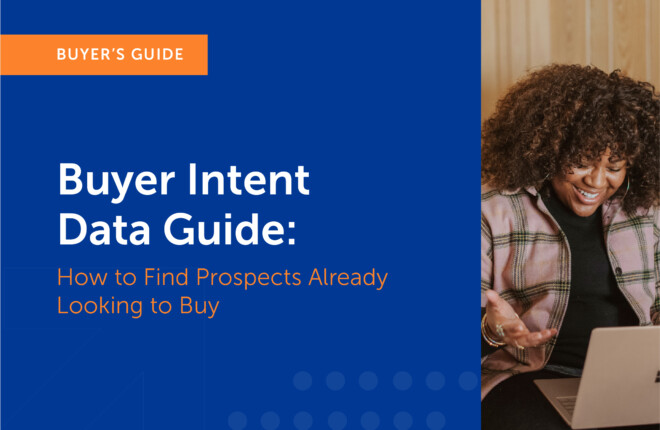Digital transformation is forcing every company to embrace cloud technologies for its business operations and the products or services it provides to its customers.
Why?
These companies can clearly see the benefits: reduced infrastructure costs, pay-as-you-go services, enhanced flexibility, greater agility, and significantly reduced IT costs and time.
While the cloud isn’t new to technology solution providers (TSPs), the benefits to your prospects and customers can still be uncertain (or unknown). Cloud services are less tangible than other products, but promoting and selling your services simply is your job, putting the benefits first and foremost. Thus, you need to be exceptional at generating qualified leads.
This article will help you learn five successful lead generation techniques and how you can master the art using SalesIntel.
#1: Target Qualified Prospects
First, try identifying common characteristics in your existing customers. Study their firmographic characteristics for trends. Do most of them come from a similar industry, or do they have the same company size? They may have been working for the same number of years, or have common pain points? By understanding what type of companies buy into your service, you can better target the companies you have the highest chance of closing.
Pro tip: build a customer profile that describes your ideal client’s characteristics to help you develop targeted content for your marketing efforts.
Remember that not everyone is a good fit for your cloud services practice area or your company. By studying your current customers and selecting the most qualified leads carefully, you are ensuring that you only target those who are ready to buy.
#2: Educate and Drive Awareness
You need to inform your prospects on how your services work, and why choosing your ongoing services is useful to them. Instead of trying to close the sale right away, focus on increasing awareness and education about the services you offer.
Cloud is more of a technical term. So, it is particularly important to ensure that you provide reliable information. The more you educate your prospects, the more it will help you build trust. Not only does it help your prospects see the value in it for them, but it also helps to establish your business as a trusted technology provider who is up to date with the latest trends in the industry.
#3: Lead with Value and Differentiation
Why should your prospect choose you over other cloud service providers? Be prepared to explain your differentiators and demonstrate how you’re better. Create templates, content, and guidelines that clearly illustrate how important your service is, and why the price is worth it.
Your prospects will not like having to wade through tons of information to determine which solution is best. So your prospects will be more likely to buy when you start the sales process with a deep understanding of their needs and how your service provides value or solves problems for them.
Remember, your clients or prospects will be looking at alternatives that give them the combined services they need.
#4: Map Solutions to Business Goals
Your customers want cloud adoption to help them achieve business goals; this may include reduced capital costs, simplified service management, or improved collaboration.
Whatever their goals are, show customers how they can achieve results through the cloud. A word of warning, that’s not going to be easy. Consumer complaints are legitimate regarding interruption of services, data protection, and ip address concerns. Ensure that your solution addresses those and similar concerns. Not only do your potential customers want to move to the cloud, but they most importantly want a technology-enabled solution to a business issue. Show them the way through a simplified experience that addresses all their concerns.
#5: Don’t Sell Technology
Clients usually don’t care as much about individual features like patch management, anti-spyware, anti-spam, recovery, endpoint protection, tracking, cloud storage, or SaaS applications as we do.
In order to effectively sell your customers the idea of managed services, it is important to focus on the end result of your offering, rather than the bits and bytes of how you deliver it. Show them the cost-effectiveness of being proactive and using automation to deliver a higher level of performance, functionality, and stability.
The greatest expense is in terms of human resources. If you can explain how your technology solution translates into better employee utilization and productivity, you can show them in tangible benefits why managed services are so critical.
How You Can Reach Your Potential Customers Using SalesIntel
Lead generation strategies in the B2B industry are evolving because customers have more access to information than ever before. The buying process goes through various crucial stages, from initial outreach to building trust to provide the best customer experience in the process.
Businesses offering cloud services have to deal with a lot of competition. One of the best ways to get a leg up is to get in contact with prospects before other salespeople do. However, only a fraction of buyers actively searching for a solution will make it to your site without sales and marketing outreach, and only a fraction of those who hit your site will be actively involved in the purchasing decision. It’s important to remember that no matter how well you have defined your Ideal Customer Profile (ICP) and your buyer personas, only about 15% of those targeted companies will be actively engaged in a buying decision at any given time. Here is when buyer Intent Data helps you identify those prospects that are actively involved in a purchase decision based on the type of content they consume.
SalesIntel’s Intent Data will help you uncover your prospects’ buying signals by identifying the 15% of your target accounts that are ready to buy now and allowing you to focus your sales and marketing efforts on converting those most likely to close.
Any data partner needs a transparent and consistent strategy to collaborate with an organization to enhance the quality of their data. This practice keeps us committed to providing the best sales intelligence platform and keeps us motivated to continue adding value to our B2B results. From the many values that SalesIntel brings to your data, here are a few primary features that make switching to SalesIntel easier for the B2B companies.
You can access the industry’s most accurate and comprehensive B2B data with SalesIntel that includes firmographic, technographic data, and work mobile numbers for your (ICP) along with access to buyer Intent Data.
Want to learn how to search for data that can help you take quick decisions and bring more value to your business?




